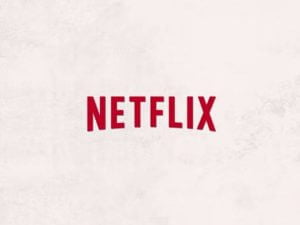![]() Wider adoption of the HTML5 standard for media players is a good thing, if for no other reason than, it means Flash will be killed off faster. That’s why it’s good news when larger, established platforms begin to adopt HTML5. That’s what happened when Livestream recently announced the rollout of its new HTML5 player:
Wider adoption of the HTML5 standard for media players is a good thing, if for no other reason than, it means Flash will be killed off faster. That’s why it’s good news when larger, established platforms begin to adopt HTML5. That’s what happened when Livestream recently announced the rollout of its new HTML5 player:
Livestream’s HTML5 player is now available to Chrome users on Livestream.com as well as in the live player embed and video-on-demand.
HTML5 has become the industry standard in video viewing. More web browsers are eliminating the need for plugins and add-ons as HTML5 players have greater flexibility than their Flash counterparts.
Now Livestream producers and viewers alike will enjoy more resilient playback on Livestream.com and Livestream’s player embeds as well. This new player is nimble and responsive, equipped for quicker load times and less processing power from your computer so it won’t slow you down.
Livestream hasn’t completely given up on Flash yet. The new HTML5 player is only available to Google Chrome users who are viewing video streams on the Livestream website or embedded Livestream media players. But, the company is planning to implement HTML5 on other browsers and platforms:
We’re eager to implement the HTML5 player across all browsers, including support for Safari, Firefox, and others. These changes are automatic, so users will not need to adjust their account settings, nor will they incur any additional cost.
This is great news for video producers and consumers. Hopefully, more platforms will follow Livestream’s lead and begin implementing HTML5 media players.

 We’ve written about
We’ve written about  Popular video-streaming service Netflix made a significant change to how it works when it recently announced it’d allow users on mobile devices to download complete videos, instead of offering only streaming. It was a smart move on behalf of Netflix, as it gives mobile users the ability to download movies and TV shows on Wi-Fi and then consume those videos where they may have limited (or no) internet access.
Popular video-streaming service Netflix made a significant change to how it works when it recently announced it’d allow users on mobile devices to download complete videos, instead of offering only streaming. It was a smart move on behalf of Netflix, as it gives mobile users the ability to download movies and TV shows on Wi-Fi and then consume those videos where they may have limited (or no) internet access. Online video distribution service Vimeo has been working hard to build its reputation as “the world’s best creative community.” Vimeo launched when the internet video market began to take off during the previous decade. Realizing that the company would never be able to compete with YouTube on a macro level, Vimeo refocused itself as a purveyor of tools and services for independent video producers and filmmakers. Over time, Vimeo has introduced things like digital sales and subscription services that make it easy for producers to sell their videos online.
Online video distribution service Vimeo has been working hard to build its reputation as “the world’s best creative community.” Vimeo launched when the internet video market began to take off during the previous decade. Realizing that the company would never be able to compete with YouTube on a macro level, Vimeo refocused itself as a purveyor of tools and services for independent video producers and filmmakers. Over time, Vimeo has introduced things like digital sales and subscription services that make it easy for producers to sell their videos online. Microsoft has endured a lot of criticism lately over its aggressive policy of pushing software updates onto customers. This was probably demonstrated most noticeably over the company’s unwillingness to let users of Windows 7 and Windows 8 stay with their current operating systems, and constantly badgering (and in some cases, forcing) them to upgrade to Windows 10. Now it looks like the Redmond, WA-based tech monolith is about to receive a new round of hate, as its recently released Windows 10 Anniversary Update is
Microsoft has endured a lot of criticism lately over its aggressive policy of pushing software updates onto customers. This was probably demonstrated most noticeably over the company’s unwillingness to let users of Windows 7 and Windows 8 stay with their current operating systems, and constantly badgering (and in some cases, forcing) them to upgrade to Windows 10. Now it looks like the Redmond, WA-based tech monolith is about to receive a new round of hate, as its recently released Windows 10 Anniversary Update is  Time waits for no one. Nor does the inevitable progress of higher-resolution video. It still feels like true HD video has just barely been normalized here in the United States. And yet the push beyond HD, into 4K and even 8K, has begun. The latest example of the move forward comes from Japanese public broadcasting agency NHK (also known as Japan Broadcasting Corp.) as the company has begun
Time waits for no one. Nor does the inevitable progress of higher-resolution video. It still feels like true HD video has just barely been normalized here in the United States. And yet the push beyond HD, into 4K and even 8K, has begun. The latest example of the move forward comes from Japanese public broadcasting agency NHK (also known as Japan Broadcasting Corp.) as the company has begun